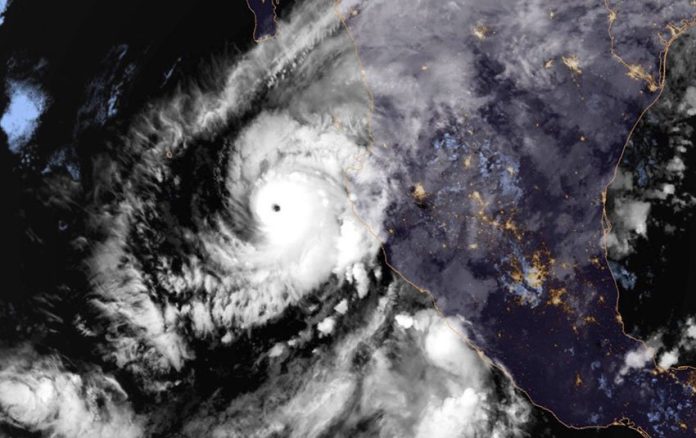Forecasters are predicting more intense hurricane activity in the eastern Pacific Ocean this year and slightly-below average activity in the Atlantic.
Christian Domínguez, a hurricane expert and researcher at the Center of Atmospheric Sciences of the National Autonomous University (UNAM), told the newspaper Reforma that between 14 and 16 tropical cyclones can be expected in the Pacific during the hurricane season, which officially begins today.
“The tropical cyclone activity . . . in the Pacific will be more active because of El Niño, in other words, [there will be] very high [water] temperatures that favor the formation of tropical cyclones,” he said.
Domínguez predicted that the Pacific Ocean cyclones will be stronger than last year, and reach categories as high as the maximum of 5 on the Saffir-Simpson scale.
In the Atlantic Ocean, Domínguez predicted that there will be 12 tropical cyclones this season, while researchers at the Colorado State University (CSU) are predicting 13.
The CSU researchers forecast that the “2019 Atlantic basin hurricane season will have slightly below normal activity,” citing the relatively high probability of a weak El Niño as a primary factor for its prediction.
The university predicted that 2019 hurricane activity will be about 75% of an average season whereas 2018 activity was about 120%.
The CSU report said the tropical Atlantic is currently slightly cooler than normal, and that colder than normal sea surface temperatures provide less fuel for tropical cyclone formation and intensification.
Of the 13 named storms it is predicting, the CSU Tropical Meteorology Project team expects five to become hurricanes and two to reach major hurricane strength, meaning they would be Category 3, 4 or 5 on the Saffir-Simpson scale with sustained winds of 178 kilometers per hour or higher.
The Atlantic hurricane season starts on June 1 and like the Pacific season will conclude on November 30.
Source: Reforma (sp)
